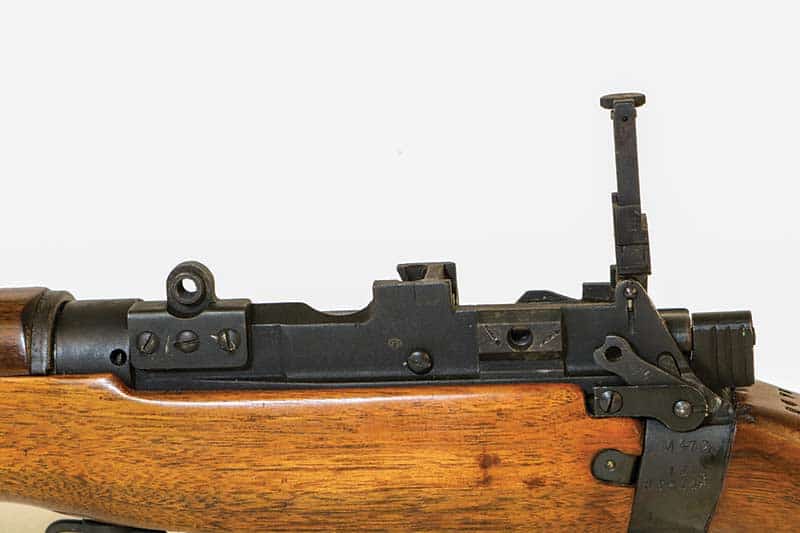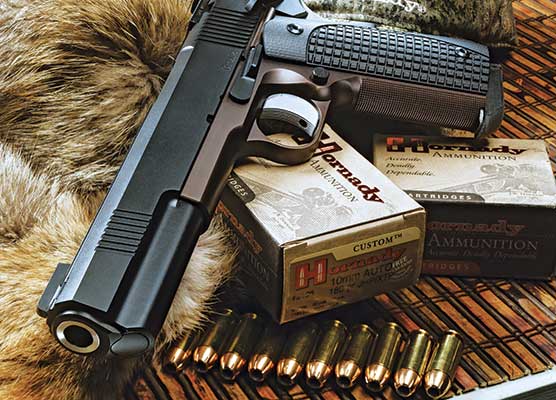The Lee-Enfield No. 4 MK1 (T)
Sniper Rifle
A Fortuitous Turn Of Events
The elderly man was a Southern gentleman right out of central casting. He had been working in his shop and slipped with something sharp. He presented to the clinic with his hand expertly dressed with a strip of old T-shirt. I observed this was clearly not his first battle dressing. The man just smiled.
I love gory wounds. I know that sounds ghoulish, but bloody injuries mean I’m not in a hurry. Repairing a juicy chainsaw-versus-thigh just can’t be rushed. At work, this makes for a great opportunity to visit.
Drive-by War Story
He just had the look. As I prepped my gear, I queried the details. He said 11 Bravo — Infantry. I gestured over my shoulder at the pictures of helicopters adorning the walls of the treatment room. I explained I had been one of those damn aviators. It invariably draws a chuckle.
He had been an Infantry company commander in Korea. As is my custom, I asked for his most compelling war story. Wow.
They had been on the line for weeks and they were tired. He unexpectedly received orders to report to the rear with his company for a special equipment issue. He cared little for the newfangled gear but he was stoked about the prospect of some hot chow and a field shower.
They were drawing bulky new flak jackets. His troops were not completely sold on them. They feared the extra weight might slow them down. Regardless, they each grabbed a vest and reconfigured their web gear before reporting for chow. They returned to the line the following morning.
Mid-afternoon first day back my buddy was on a recon patrol when he suddenly felt like he had been hit in the chest with a sledge hammer. The force of the blow bowled him over and left him momentarily disoriented. His troops dragged him to cover to take stock.
He carried his M1911A1 pistol in a tanker’s shoulder holster. The heavy rifle round had struck his pistol a glancing blow before plowing straight into his chest. The big bullet was making a beeline for his heart only to be stopped by his spanking new flak vest. He had worn the thing less than 24 hours.
Those early vests would not have stopped a proper rifle shot, but this round was partially spent after ruining his pistol. The vest was the only reason he was alive. He scared up replacements for both his vest and his handgun and went back to work with a newfound respect for body armor.
My buddy’s troops killed the Chicom sniper in short order and returned with a meticulously well-maintained British Lee-Enfield No. 4 Mk 1 (T) sniper rifle. Both sides in the Korean War used WWII-surplus weapons. There is no telling the circuitous route that brought the vintage British sniper rifle to this frozen Korean battlefield. His guys offered him the rifle but he had little time for souvenirs. He had an Infantry company to run.
The Rifle
The Lee-Enfield No. 4 Mk 1 (T) sniper rifle with which my buddy was shot was arguably the most refined precision combat rifle used during World War II. It was the ultimate evolutionary iteration of the original 19th-century Lee-Metford bolt-action infantry rifle. The Lee-Metford had a turned-down bolt and a prodigious rate of fire but was still hamstrung by its black powder ammunition. The subsequent Lee-Enfield was produced from 1895 through 1957 and was the apex predator among bolt-action infantry combat weapons. The Commonwealth ultimately produced an extraordinary 17 million copies.
The Lee-Enfield was arguably the fastest bolt-action rifle ever contrived. The action cocked on closing and the turned-down bolt described an abbreviated 60-degree throw. The Lee-Enfield also fed from a generous 10-round detachable box magazine. The synergistic result offered an unparalleled rate of aimed fire. In 1914 an English shooting instructor named Sergeant Frank Snoxell of the Loyal North Lancashire Regiment placed thirty-eight .303 rounds inside a 12″ circle at 300 yards in 60 seconds. British gunnery instructors referred to this exercise as a “Mad Minute.” His class record remains unbroken today.
The early SMLE (Short Magazine Lee-Enfield) was called the “Smelly” by British Tommies during WWI. The Mk III was the definitive version and could be identified at a glance by its stubby hog-nosed appearance. These rifles were beautifully rendered examples of the pre-war gunmaker’s art.
Early versions had a manual magazine cutoff necessitating they be loaded one round at a time from the top. British military authorities incorporated this dubious feature out of concern Tommies in combat with a 10-shot repeater might be profligate with their ammunition expenditure. This magazine cutoff was deleted in short order. You could also load the rifle from the top via stripper clips. In some cases, the detachable magazines were actually secured to the rifle with a short length of chain.
The subsequent WWII-era Lee-Enfield No. 4 was simplified in many respects for mass production and reduced cost. The complicated rear sight of the Smelly was binned in favor of a simple two-position flip peep. The WWII-vintage No. 4 can be distinguished at a glance by the stubby length of barrel protruding from the nose of the weapon.
The Apex Predator
In the face of modern maneuver warfare, the British Army required a precision rifle. The standard No. 4 Lee-Enfield was the obvious starting point. Stock No. 4 rifles were identified at the factory for unusual accuracy potential. These hosts were then fitted with a wooden cheek riser along with a No. 32 3.5X telescopic sight. The resulting sniper rifles were designated the Lee-Enfield No. 4 Mk 1 (T).
The optic had a field of view of 8 degrees 20 minutes and included an organic bullet drop compensator (BDC) controlled via a drum on the top of the sight. This BDC was calibrated in 50-yard increments out to 1,000 yards. A side-mounted adjustment wheel affected windage adjustments in 2-MOA increments.
The No. 4 Mk 1 (T) was expected to place seven shots inside a 5″ circle at 200 yards. Six of seven shots had to strike within a 10″ circle at 400 yards. The sights and mounts were individually numbered to specific rifles. The sight was issued with leather scope covers and a stamped-steel carrying case. The scope was designed to retain its zero despite being removed and reinstalled.
A Barn Find Of Sorts
Information Age, you had to be in the right place at the right time to land an epic deal. The Internet changed all that. I tripped over the example in this story via BidToBuyGuns.com. This site connects potential buyers to regional gun auctions around the country. I have scored some awesome guns this way.
The down side is you can’t paw over the piece before you bid on it. Markings and condition are only as accurate as your screen resolution and the veracity of the auction house. However, I have still landed some gems.
I speak guns, but Lee-Enfield No. 4 Mk 1 (T) rifles are not my forte. Vintage copies in good shape with all the bells and whistles are crazy expensive, which offers fertile ground for fakes and forgeries. As near as I can ascertain, however, this example is the real deal and in great condition to boot.
Famed English gunmaker Holland and Holland converted roughly 23,000 Lee-Enfields into sniper versions. They then applied an “S51” proof pressed into the underside of the stock and a “TR” engraved into the left side of the wrist. The serial number of the optic was stamped into the stock as well. This appears to be the genuine article.
Ruminations
Before he left, my buddy from the clinic showed me a most curious scar. At one point during a firefight in Korea, he caught a 7.62x25mm round from a Chicom PPSh through the meaty part of his hand. They treated him in a MASH hospital and had him back on the line in less than a week.
These awesome old heroes walk among us, my friends. You often need only keep an eye out for the telltale signs. They stand as straight as they’re able and involuntarily stiffen in the presence of the American flag or upon hearing the Star Spangled Banner. When you find one, stop what you’re doing and ask for their favorite war story. You’ll seldom be disappointed.
Replica gear in this article:
WorldWarSupply.com










